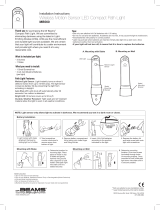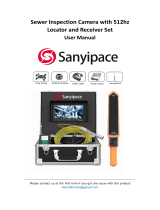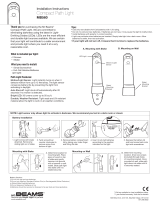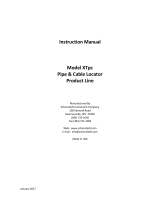
11
Using the Locator: Batteries
NOTE A spare battery pack can be carried inside the Battery Compartment.
NOTE Only use alkaline or Nickel-Metal Hydride rechargeable (NiMH) AA (LR6) size batteries.
NOTE Dispose of the used batteries safely in accordance with local regulations.
WARNING Do not change batteries in confined spaces where gas may be present.
WARNING Do not mix old and new or different types of batteries.
NOTE The Locator will carry out an automatic daily Self Test when it is switched on for the first time each day
(see pages 12-13 for full details)
C.Scope Locators can be powered by either eight standard alkaline
or Nickel-Metal Hydride rechargeable (NiMH) AA (LR6) size batteries.
Locator Battery Check
Switch the Locator on by pulling up on the On/Off trigger positioned
on the underside of the handle. The Locator should emit a clear audible
battery check tone for one second and the display should come on.
Check the battery level indicator in the bottom left hand corner
of the display. If there is only one segment or no segments
of the indicator filled in then the batteries will need to be replaced
or recharged before locating work can begin.
Changing Locator Batteries
l Push the two clips back to release the Battery Compartment door.
l Remove ALL EIGHT used batteries and replace with new or recharged ones.
l Be careful to insert the new batteries the correct way round in the holder.
l Replace the holder in the Battery Compartment making sure that the two terminals on the holder make contact with the two
terminals within the Battery Compartment.
l Close the Battery Compartment door securely.
Replace or Recharge batteries
Battery Levels OK































